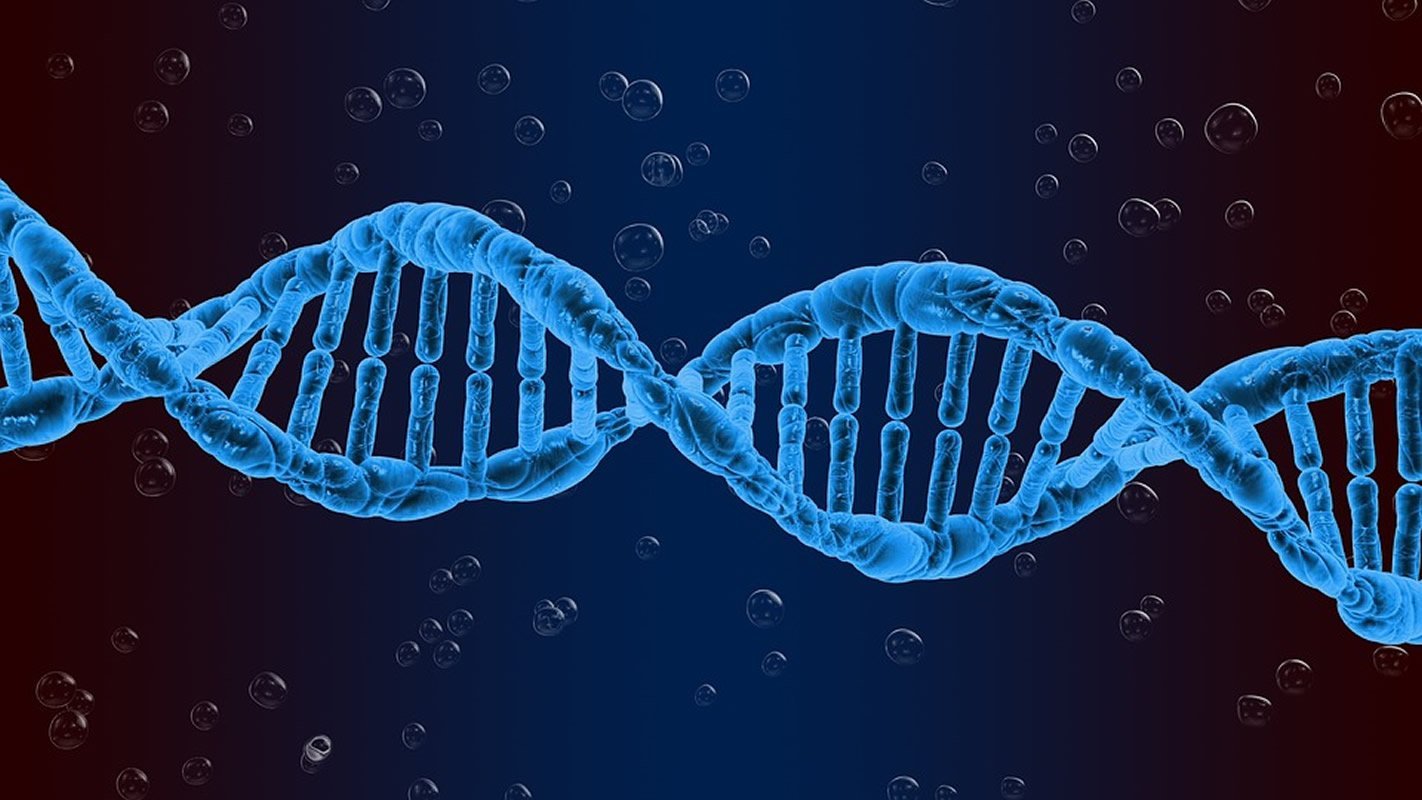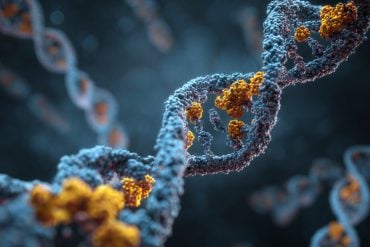Summary: Genome-wide study identifies five novel alcohol use risk loci which can pass on the risk of developing alcohol abuse disorder from parents to children.
Source: Elsevier
A genome-wide association study has identified five new genetic risk loci that can pass on risk for harmful alcohol use from parents to children, and confirmed one previously identified risk locus. The findings were published in Biological Psychiatry.
The risk variants associated with maximum habitual alcohol use were identified using data from the Million Veteran Program (MVP), a study creating a database of genetic and health information of US military veterans. Habitual alcohol use can lead to alcohol dependence and is connected to many health problems. The findings provide insight into the role of genetics in this behavior.
“Even in this era of large samples for genetics studies, the MVP sample stands out: it is one of the largest samples collected so far using the same questions to assess alcohol use; and it includes many socioeconomically disadvantaged individuals and people of non-European descent, who are underrepresented in most other such studies,” said first author Joel Gelernter, MD, Yale University School of Medicine.
This diversity of the sample allowed the researchers to divide nearly 144,000 participants based on African or European ancestry and included the largest single African-ancestry sample studied thus far for the genetics of alcohol. Integrating the unique genetic histories of the African-American and European-American subpopulations in a meta-analysis greatly improved the genetic mapping precision of the analysis. Using this approach, Dr. Gelernter and colleagues identified a strong association of maximum habitual alcohol use with a new risk locus, CRHR1, corticotropin-releasing hormone receptor 1.
“Habitual excessive alcohol consumption is the most difficult to treat because of its compulsive nature. This study provides new insights into mechanisms that may drive this behavior. Interestingly, this study implicates CRHR1, a gene previously implicated in stress response. By implicating this gene, this study may suggest a link between the propensity for a heightened stress response and the risk for habitual alcohol use,” said John Krystal, MD, Editor of Biological Psychiatry.
When the subgroups of differing ancestry were analyzed separately, the locus most strongly associated with maximum habitual alcohol use, gene ADH1B, was the same in both populations. This gene has been flagged in previous genome-wide studies, confirming its importance in genetic risk for many traits related to alcohol use and abuse. Three new loci were also identified in the European-American group, including CRHR1.

The alcohol-related genetic loci–taken as a whole across the genome–were associated with many other traits, including tobacco smoking, socioeconomic status, physical activity, and other health complications, highlighting the pervasive effects of habitual alcohol use on many other aspects of health and behavior.
“This study demonstrates the tremendous utility of the MVP for discovery of genetic variants associated with excessive alcohol use and with other health-relevant problems and disease states. The MVP as currently analyzable is only about a third of its eventual size, so we may confidently predict much more from it in future,” said senior author Murray Stein, MD, University of California San Diego.
Source:
Elsevier
Media Contacts:
Rhiannon Bugno – Elsevier
Image Source:
The image is in the public domain.
Original Research: Closed access
“Genomewide Association Study of Maximum Habitual Alcohol Intake in >140,000 US European- and African-American Veterans Yields Novel Risk Loci”. Joel Gelernter, Ning Sun, Renato Polimanti, Robert Pietrzak, Daniel F. Levey, Qiongshi Lu, Yiming Hu, Boyang Li, Krishnan Radhakrishnan, Mihaela Aslan, Kei-Hoi Cheung, Yuli Li, Nallakkandi Rajeevan, Fred Sayward, Kelly Harrington, Quan Chen, Kelly Cho, Jacqueline Honerlaw, Saiju Pyarajan, Todd Lencz, Rachel Quaden, Yunling Shi, Haley Hunter-Zinck, J. Michael Gaziano, Henry R. Kranzler, John Concato, Hongyu Zhao, Murray B. Stein, on behalf of the Department of Veterans Affairs Cooperative Studies Program (#575B) and Million Veteran Program.
Biological Psychiatry. doi:10.1016/j.biopsych.2019.03.984
Abstract
Genomewide Association Study of Maximum Habitual Alcohol Intake in >140,000 US European- and African-American Veterans Yields Novel Risk Loci
Background
Habitual alcohol use can be an indicator of alcohol dependence, which is associated with a wide range of serious health problems.
Methods
We completed a genome-wide association study in 126,936 European American and 17,029 African American subjects in the Veterans Affairs Million Veteran Program for a quantitative phenotype based on maximum habitual alcohol consumption.
Results
ADH1B, on chromosome 4, was the lead locus for both populations: for the European American sample, rs1229984 (p = 4.9 × 10−47); for African American, rs2066702 (p = 2.3 × 10−12). In the European American sample, we identified three additional genome-wide–significant maximum habitual alcohol consumption loci: on chromosome 17, rs77804065 (p = 1.5 × 10−12), at CRHR1 (corticotropin releasing hormone receptor 1); the protein product of this gene is involved in stress and immune responses; and on chromosomes 8 and 10. European American and African American samples were then meta-analyzed; the associated region at CRHR1 increased in significance to 1.02 × 10−13, and we identified two additional genome-wide significant loci, FGF14 (p = 9.86 × 10−9) (chromosome 13) and a locus on chromosome 11. Besides ADH1B, none of the five loci have prior genome-wide significant support. Post–genome-wide association study analysis identified genetic correlation to other alcohol-related traits, smoking-related traits, and many others. Replications were observed in UK Biobank data. Genetic correlation between maximum habitual alcohol consumption and alcohol dependence was 0.87 (p = 4.78 × 10−9). Enrichment for cell types included dopaminergic and gamma-aminobutyric acidergic neurons in midbrain, and pancreatic delta cells.
Conclusions
The present study supports five novel alcohol-use risk loci, with particularly strong statistical support for CRHR1. Additionally, we provide novel insight regarding the biology of harmful alcohol use.






